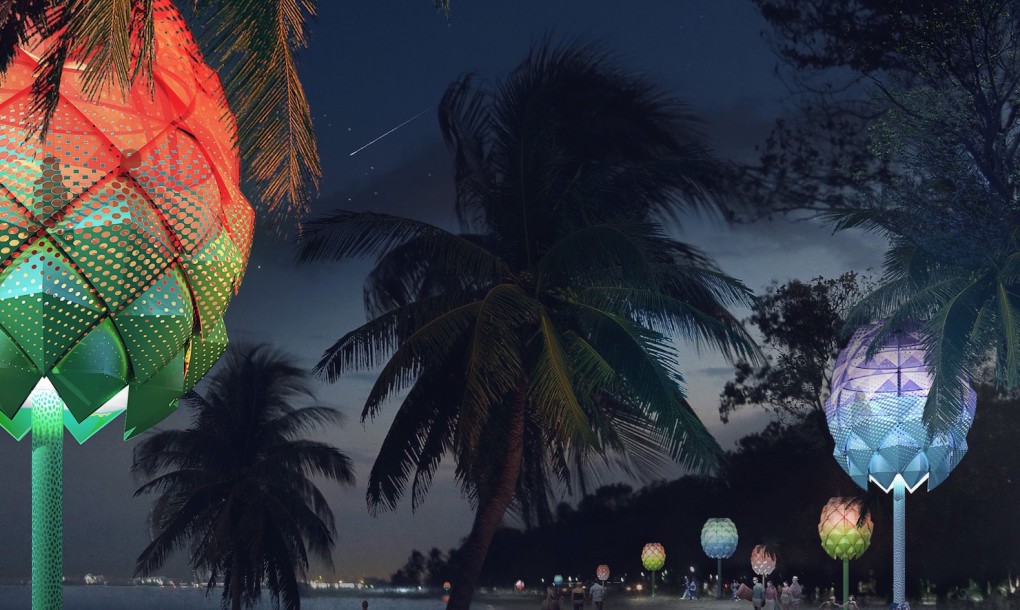Did you know that the Great Pacific Garbage Patch is twice the size of France? The amount of trash, particularly plastic, dumped in the world’s oceans is staggering. Design studio SPARK has unveiled one way to tackle the problem with a beautiful and functional solution: solar-powered beach huts. The firm’s Singapore office proposes recycling trash from the South Pacific Garbage Patch into permanent palm tree-like beach huts for Singapore’s East Coast Park.

Inspired by the work of Parley for the Oceans, an organization of creatives that addresses major threats towards our oceans, SPARK developed the recycled plastic Beach Hut design to help bring attention to the problem of ocean trash.

The palm tree-like structures would be built with a geometric skin manufactured from recycled HDPE (high density polyethylene), a non-biodegradable plastic that SPARK says makes up the majority of the plastic dumped in our oceans. The plan is to recover HDPE from the South Pacific Garbage Patch, color code it, shred it, and then reform the material into 3D stiff scale-like shingles that clad the hut.

The beach huts’ underlying structure would be made from a pre-cast stem with recycled glass aggregate and a cross-laminated timber frame. Thin film photovoltaic cells would be laminated onto the recycled HDPE scales and help generate electricity for lighting and the interior ceiling fan.

Each hut is accessible via a trap door and a steel rope ladder.
From our partners:

“[Different] color variations [are] possible using recycled HDPE,” said SPARK, who aims to produce a family of beach huts “that are engaging and elegant contributors to the Singapore shoreline whilst telling the story of an imaginative reuse of a plastic material that is part of our everyday lives but which given its disposable nature is contributing to the destruction of ocean life and our environment.”
This feature originally appeared in Inhabitat.















